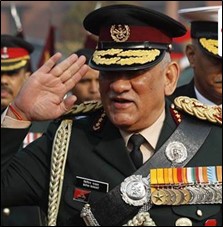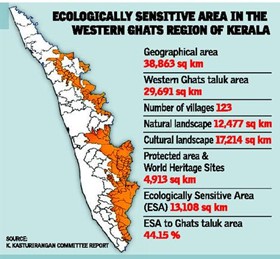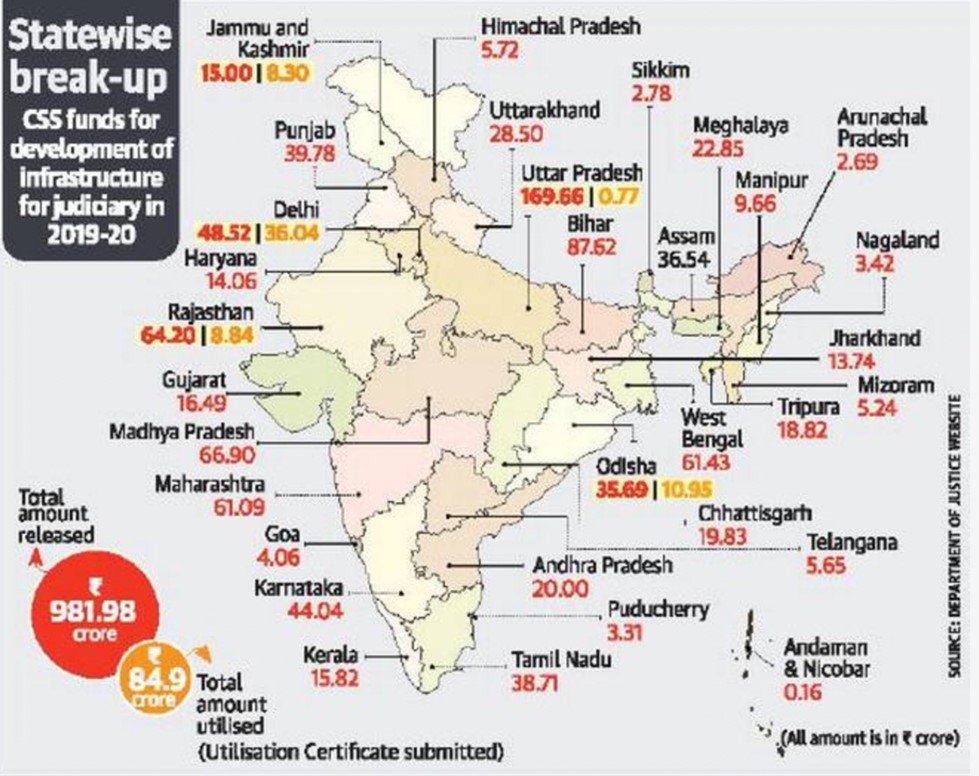Monday, 13th December 2021
India Tests VL-SRSAM: Naval Defense Milestone
In News
The Vertical Launch Short Range Surface to Air Missile (VL-SRSAM) designed for Indian Naval warships was successfully tested by India recently.
Understanding Vertical Launch Short Range Surface to Air Missile (VL-SRSAM)
- What is VL-SRSAM? It has been designed and developed jointly by Defence Research and Development Laboratory (DRDL), Research Centre Imarat (RCI), and Research & Development Establishment (Engineers) of the DRDO.
- The missile has the capability of neutralising various aerial threats at close ranges including sea-skimming targets (The tactic of sea skimming involves anti-ship missiles and some fighter jets flying as close as possible to sea surface to avoid being detected by the radars onboard warships thus being difficult to detect and neutralise).
- The design of VL-SRSAM: The missile has been designed to strike at the high-speed airborne targets at the range of 40 to 50 km and at an altitude of around 15 km. Its design is based on Astra missile which is a Beyond Visual Range Air to Air missile.
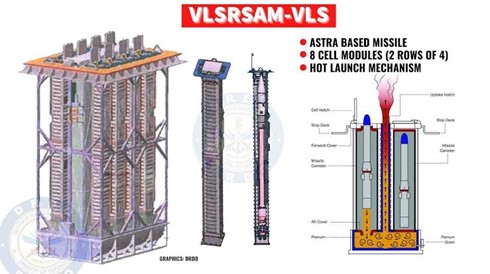
- Features: Two key features of the VL-SRSAM are:
- Cruciform wings: These give the projective a stable aerodynamic posture.
- Thrust vectoring: It is an ability to change the direction of the thrust from its engine control the angular velocity and the attitude of the missile.
- It is a canisterised system: This means that it is stored and operated from specially designed compartments. In the canister, the inside environment is controlled, thus making its transport and storage easier and improving the shelf life of weapons.
Strategic Significance of the Missile
- Future Launches: The successful testing of these systems acts crucial for future launches of the missile from Indian Naval Ships.
- Future Wars: VL-SRSAM will help in naval warfare, thorough systems which provide swift detection mechanism, quick response, high speed and high manoeuvrability:
- Methods of chaffs: It is a countermeasure technology to protect naval ships from enemy’s radar and Radio Frequency (RF) missile seekers.
- Deploying missiles to counter Anti Ship missiles.
Source:
- Explained: What is the vertical launch surface to air missile that India has successfully test-fired?
- India successfully tests vertical launch short range surface-to-air missile
Image Source:
India 4th most powerful country in Asia
In News
According to Lowy Institute’s, ‘Asia Power Index’, India is the 4th most powerful country in Asia, while the US tops the list.
About the Report
- The annual Asia Power Index measures resources and influence to rank the relative power of states in Asia.
- The project maps out the existing distribution of power as it stands today, and tracks shifts in the balance of power over time.
- This year, the Index includes three new indicators that track Covid-19 vaccine doses administered nationally as well as regional vaccine diplomacy efforts and donations per capita.
Key Findings
- The Covid-19 pandemic has driven down the comprehensive power of almost all states in 2021, weakening their capacity to respond to and shape their external environment.
- The US managed to expand its power through better diplomacy and retained its position as the most influential nation in the region.
- China’s comprehensive power has fallen for the first time, with no clear path to undisputed primacy in the Indo-Pacific.
- The region has become more bipolar and less multipolar with Japan and India lagging behind China, and Australia getting more reliant on the US.
- US partners are enhancing their collective deterrence to support a military balance. Yet there is a significant risk of war due to the depth of hostilities, the breadth of US–China competition and the presence of multiple potential flashpoints.
- Vaccine diplomacy is the new currency of geopolitics, and the United States leads the field.
- Indonesia makes it into the top ten, but Southeast Asian middle powers are struggling to maintain their collective clout or sustain the diplomatic narrative.
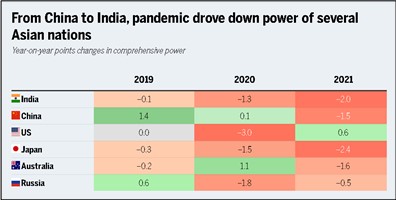
Status of India
- India was ranked 4th most powerful country behind US, China and Japan.
- Being one of the hardest hit nations in comparison to its pre-Covid growth path, India saw a loss of ranking in critical parameters like diplomatic influence and economic relationships in the last one year. Even so, India retained the fourth place in other measures of power such as economic capability, military capability, resilience and cultural influence.
- India remains an underachiever relative to both its resources and potential, them outsizing her influence in the region.
- India’s rise as a truly multipolar power, to be able to match China’s military and economic capabilities, will take a decades-long effort, with no guarantee of success.
Sources:
‘Observer’ status to ISA
In News
The United Nations (UN) has granted 'Observer' status to International Solar Alliance (ISA).
About the News
- The ISA getting an 'Observer' status in the UNGA will help this treaty-based international organization usher in a new era of green energy diplomacy for increasing solar power footprints as part of a larger goal to face the challenges of climate change.
- The move will help it better coordinate to expand its network through setting up a trans-national grid - One Sun One Work One Grid (OSOWOC) - launched on the side-lines of the COP26 in Glasgow.
- In a short span of six years, the ISA has become an example of how positive global climate action can be taken forward through partnerships.
About ISA
- The ISA was conceived as a joint effort by India and France to mobilize efforts against climate change through deployment of solar energy solutions.
- It was conceptualized on the side-lines of the COP21 to the UNFCC held in Paris in 2015.
- With the amendment of its Framework Agreement in 2020, all member states of the UN are eligible to join the ISA.
- The ISA strives to develop and deploy cost-effective and transformational solar energy solutions with particular focus on delivering impact in countries categorized as Least Developed Countries (LDCs) and the Small Island Developing States (SIDS).
- Being a global platform, ISA’s partners with multilateral development banks (MDBs), development financial institutions (DFIs), private and public sector orgnaisations, civil society and other international institutions.
- The ISA is guided by its ‘Towards 1000’ strategy which aims to mobilise USD 1,000 billion of investments in solar energy solutions by 2030, while delivering energy access to 1,000 million people using clean energy solutions and resulting in installation of 1,000 GW of solar energy capacity. This would help mitigate global solar emissions to the tune of 1,000 million tonnes of CO2 every year.

Programmes launched by ISA
- Scaling Solar Application For Agricultural Use
- Affordable Finance at Scale
- Scaling Solar Mini grids
- Scaling Solar Rooftop
- Scaling Solar E-Mobility & Storage
- Solar Park
- Solarizing Heating and Cooling Systems
- Solar PV Battery and Waste Management
- Solar For Green Hydrogen
Sources:
- https://www.livemint.com/news/india/historic-decision-rk-singh-on-un-granting-observer-status-to-india-led-isa-11639238855920.html
- https://timesofindia.indiatimes.com/india/un-general-assembly-grants-observer-status-to-international-solar-alliance/articleshow/88211104.cms
- https://isolaralliance.org/
Parliament attack
On 13th December, 2001, a terrorist attack was carried out on the Indian Parliament. All five terrorists involved in the attack and eight security personnel besides a gardener had died in the incident which brought India and Pakistan to the brink of war. There were at least 100 members of the Parliament present at the time, although no one was hurt. Over the years new security procedures have been made in the security management to counter the modus operandi of terrorists who pose a threat to the Parliament. As the democratic political structure of India was challenged, it was needed to have an enhanced authority to meet the terrorist threats. The Prevention of Terrorism Act (POTA) 2002 came into force in June 2002 and was enacted to counterfeit all the militant attacks on Indian grounds. POTA was abolished later in 2014.

Sources:
Golden jubilee of India–Bangladesh relations: A Role Model for Neighbors
In News
India and Bangladesh are celebrating the 50th anniversary of their diplomatic relations.
Evolution of ties
- India was the first country to recognize Bangladesh as an independent nation-state and immediately established diplomatic ties with it in December 1971.
- India-Bangladesh ties started on a positive note. But since the coup in 1975, the ties between the two sides were strained as secular elements of the constitution were dismantled in Bangladesh and an unstable Bangladesh would affect India’s national security.
- Since 1996, ties improved. However, once again in 2001, the ties shifted for the worse as the Bangladesh National Party came to power and partnered with Jamaat-e-Islami which is a pro-Pakistan outfit.
- India-Bangladesh relations were strained till 2009. From 2009 onwards the ties have been on an upswing as significant developments have been made over three key thematic areas: dispute resolution, cooperation and connectivity.

Key cooperation areas – An exemplary role model
Contemporary India-Bangladesh relations have taken great strides forward, especially in recent years. Two major pillars of Indian diplomacy — Neighbourhood First and Act East policies — find expression in India's vibrant ties with Bangladesh.


Challenges
- Water Dispute: While Bangladesh and India share 54 trans-boundary rivers, no other water sharing treaty expect the Ganga Water Sharing Treaty is operational between the two countries. In recent time, the dispute centred on the Teesta river water sharing has deteriorating Indo-Bangladesh relations to an unprecedented level.
- Non-tariff barriers: Since its independence in 1971, Bangladesh has suffered severe trade deficit with India and it is widening year after year. Expert opines that the reason for this imbalance is India’s protectionist economic policy and excessive non-tariff barriers.
- Rohingya Issue: Recent Rohingya crisis has resulted, although to a lesser extent, bitterness in Indo-Bangladesh relation. Amid a burgeoning humanitarian catastrophe, New Delhi had threatened to deport the 40,000 Rohingyas on the ground of national security concerns.
- Illegal Migration of Bangladeshis to India: Despite Bangladesh’s repeated denial, India constantly accesses Bangladesh for huge illegal migration of Bangladeshis to the neighbouring Indian states to an extent that contributes to the gradual demographic pattern change. In 2016, the Union Minister of State for Home Affairs of India, stated in Rajya Sabha that there are around 2 crore illegal Bangladeshi immigrants staying in India.
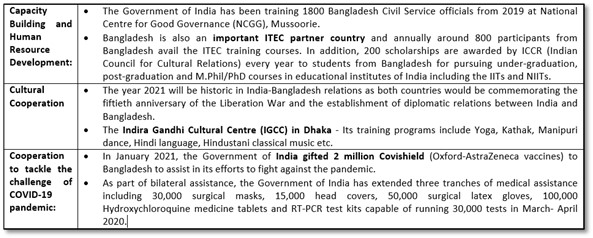
- Border Killings: In a research from Odhikar (2017) 4,138 Bangladeshi nationals have been killed by BSF between 2000 -2017.
- Rampal power plant: A new irritant is also the Rampal power plant whose location, near the Sundarbans, is a very serious concern for the environmentalists of Bangladesh, their fears shared by Indian counterparts.

Conclusion: India’s perceived refusal to give Bangladesh its share of the river waters & issue of NRC has fueled anti-India sentiments in common people of Bangladesh. Hence, successful resolution of these disputes will help India to get more political leverage, which is necessary to gain trust of Bangladesh & check the rising influence of China in the Bay of Bengal region. The countries should take note of each other’s sensitivities and vulnerabilities and demonstrate a greater political will to establish mutually cooperative ties.
Question:
India-Bangladesh relations today are deeper than any other strategic partnership. It is a role model for relations between two neighbouring countries". Examine the different aspects of this relationship and bring out their geopolitical significance.
Sources:
- India-Bangladesh Bilateral Relations
- BANGLADESH-INDIA RELATIONS: TRENDS AND CHALLENGES
- Joint Statement issued on the occasion of the visit of Prime Minister of India to Bangladesh
- Bangladesh’s geopolitical position provides for unique opportunities
- 50 Years After Independence, Bangladesh Bursts Into Geopolitics
- Need For a Proactive Policy Towards Bangladesh
- Transformation of Indo-Bangladesh Relations: From Insecurity to Cooperation in Northeast India
- India’s relations with Bangladesh a ‘role model’ in international affairs: Shringla
- Overview of India-Bangladesh Relations 50 years after Liberation
- Golden jubilee and beyond: India–Bangladesh relations
- 50 years of India–Bangladesh relations: Marking maturity
- Are India–Bangladesh relations at a crossroad?
- Bangladesh–India relations: Empowering the third space for a way forward
- Emerging dimensions of Bangladesh-India hydropolitical relations
- Bangladesh–India ties: Crossing a threshold
- Bangladesh–India ties: Time to seize the opportunities
- Making Sense of India–Bangladesh Relations
- Remarks by External Affairs Minister at the Joint Press Conference with Bangladesh Foreign Minister in Dhaka
- Despite history, geography
- Friends first: despite some turbulence, Indo-Bangladesh ties have been warm
- India-Bangladesh Relations: The Bigger Picture
- Bangladesh’s Evolving Relations With India and Pakistan
- 50 Years Of India-Bangladesh Relationship: Changed Realities, Unchanged Value
Telescope to observe Blackholes
This is image of a SpaceX Falcon 9 rocket, which blasted off with NASA’s Imaging X-ray Polarimetry Explorer (IXPE) satellite. A joint effort with the Italian Space Agency, the IXPE observatory is NASA’s first mission dedicated to measuring the polarization of X-rays from the most extreme and mysterious objects in the universe – supernova remnants, supermassive black holes, and dozens of other high-energy objects. IXPE carries three state-of-the-art space telescopes with special polarization-sensitive detectors. Polarization is a property of light that holds clues to the environment from which the light originates. The new mission builds on and complements the scientific discoveries of other telescopes, including the Chandra X-ray Observatory, NASA’s flagship X-ray telescope.

Source:
SmartFiber technology
- Context: ACT Fibernet has introduced ACT SmartFiber technology for all users across the country, at no additional cost.
- The technology ensures that each customer has a dedicated virtual speed lane from their homes to the data centre. Regardless of peak hour and size of usage on network, the user will always get their plan speeds.
- The SmartFiber technology is optimised for video streaming through smart caching, peering and other traffic routing technologies that enables a viewing experience in 4K with no buffering and lags especially on large screen TVs.
- It is also optimised for ultra-stability, with low latency and jitters ensuring a seamless video conference experience.
- ACT SmartWiFi is being powered by WiFi6 routers that not only ensures increased speeds but also enables more devices to connect simultaneously. It also optimises bandwidth according to usage. For example, streaming devices at home get more bandwidth than mobiles used for texting, thus enabling optimal experience.

Source:
- ACT Fibernet introduces Smart Fiber Technology
- ACT Fibernet introduces SmartFiber technology-Business Journal
Image Source:
Jnanpith Award
- Context: Assamese poet Nilmani Phookan Jr won the 56th Jnanpith Award and Konkani novelist Damodar Mauzo has won the 57th Jnanpith Award.
- Jnanpith Award, highest literary award in India, given annually for the best creative literary writing to writers in any of the 22 “scheduled languages” recognized in the Indian Constitution.
- The prize carries a cash award, a citation, and a bronze replica of Vagdevi (Saraswati), the goddess of learning.
- It is sponsored by the cultural organization Bharatiya Jnanpith.
- The Jnanpith Award was instituted in 1961, and the first award was given in 1965.
- Until 1982 it was presented for a specific work; thereafter, it was given for a writer’s overall contribution to literature. Since then, the award has typically been given every year to one author, although in some years it has been jointly offered to two.
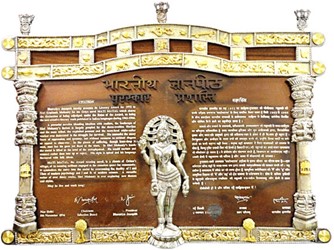
Source:
Laser Communications Relay Demonstration
- Context: NASA recently launched its new Laser Communications Relay Demonstration (LCRD).
- It is the NASA’s first-ever laser communications system, which will help the agency test optical communication in space.
- Currently, most NASA spacecraft use radio frequency communications to send data. Optical communications will help increase the bandwidth 10 to 100 times more than radio frequency systems.
- LCRD has two optical terminals – one to receive data from a user spacecraft, and the other to transmit data to ground stations. The modems will translate the digital data into laser signals.
- Laser communications and radio waves use different wavelengths of light. Laser uses infrared light and has a shorter wavelength than radio waves. This will help the transmission of more data in a short time.
- As per NASA, it would take roughly nine weeks to transmit a completed map of Mars back to Earth with current radio frequency systems. With lasers, we can accelerate that to about nine days.

Source:
SAMPANN project
- Context: Over 1 lakh people have been receiving pension directly into their bank accounts through SAMPANN project.
- SAMPANN – ‘System for Accounting and Management of Pension’ is an ambitious project of Government of India launched in 2018.
- It is being implemented by Controller General of Communication Accounts, Department of Telecommunications, Ministry of Communications.
- It is a seamless online pension processing and payment system for Department of Telecommunications pensioners that provides direct credit of pension into the bank accounts of pensioners.
- The system has helped the Department in faster settlement of pension cases, improved reconciliation/auditing and ease of accounting.
- It has also been instrumental in settling close to 76000 BSNL Voluntary Retirement Scheme 2019 cases in a short span of 6 months.

Source:
- Over 1 lakh people getting pension directly into their bank accounts through SAMPANN project
- Over one lakh people getting pension directly into their bank accounts through SAMPANN Project: Govt
Image Source:
The implications of mutual assured vulnerability for the Indo-Pacific region: HT
Essence: The editorial focuses on implications of development of Chinese defense forces on USA and India. China has expanded its military outreach with construction of innumerable missile silos, testing of hypersonic missile system, advanced submarines, and intercontinental ballistic missiles. There are reports from US Dept of Defense of China’s attempts to multiply 4 times, its nuclear warheads by 2030. China is also attempting to create launch-on-warning (LOW) nuclear early warning counterstrike.
The low yield nuclear weapons test could help achieve a stable and mutual assured vulnerability for US and China in context of nuclear warfare. However, such stability might create a conventional weaponry conflict and instability with respect to India. This might lead to India necessarily indulging in nuclear arms race with China to gain a similar leverage. Thus, the cascading effect of such proliferation is a mix of stability-instability paradox.
Why you should read this article?
- To understand the reason for nuclear and non-nuclear arms race in Indo-Pacific region.
- To gain access to strategies that India, China and USA use to maintain security stability with each other.
Source:
Why India always misses the innovation bus?: HBL
Essence: The article talks about the innovation ecosystem in India. India when measured against its Asian counterparts scored low, performance of its two sectors stood apart i.e. atomic energy and space science. The reason being that they both stand out of the standard rules of audit in India. FDI’s are flowing in India on account of innovation, the one that focusses on real innovation is limited.
The reason being the committee responsible for allocating funds for innovation are government employees. They prefer giving money where the chances for innovation are high to avoid coming under scanner of Comptroller and Auditor General. If India wants to march forward in the innovation league, it needs to amend its rules. It should understand that one success in blue sky innovation will compensate for losses caused on all other fronts.
Why you should read this article?
- To understand the status of Research and Development in the country.
- The factors that are inhibiting India from moving up on the ladder of innovation.
The steps that India should take to improve its ecosystem of innovation.
Source:
The evolution and framing of the Constitution: TH
Essence: The new generation of our country must be enlightened about the historical background of the country. The history of the Constitution go hand in hand with the history of Congress and the Freedom Movement. Nehru’s contribution cannot be ignored. It was his Objective Resolution which formed the Preamble of the Constitution. Similarly, Ambedkar’s contribution in the drafting of the Constitution is greatly valued. Though he radically deferred from Gandhi, Congress chose him to be the Chairman of the Drafting Committee.
‘Accountability’, as reminded by CJI is an integral part of the Constitution with respect to Legislative and Executive. Judiciary has been kept on different pedestal consciously. It is an independent institution answerable neither to legislative nor to executive. It was made independent so that it can do justice to all.
Why to read this article?
- To know a few important historical aspects related to making of the Constitution and to appreciate the contributions of Nehru and Ambedkar.
- To understand the issue of ‘Accountability’ with the respect of Judiciary and how is it different from Legislative and Executive.
Source:
Thianal: A Child Marriage Free Village
Background
- Child marriage is a reality in India, despite enactment of laws and initiatives in this direction.
- Thianal village of Odisha became Child Marriage Free after 5 years of rigorous efforts from the people of the village.
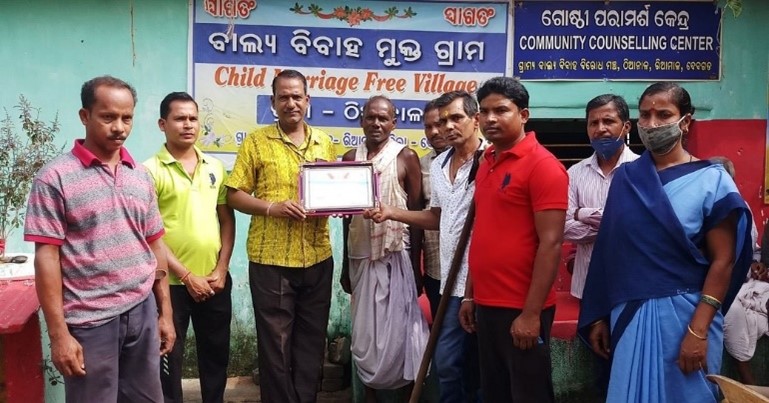
Achieving this milestone
- The efforts to achieve the status of child marriage free started with the sensitization of the locals in the village.
- Initially two youth from the village attended District Level Sensitisation programme against child marriage and this practice was continued from thereon.
- With sensitization and awareness, registration of the bride and groom was made mandatory for the marriages to take place, where both parties need to submit their age proof certificate.
- This initiative was supported by the administration and NGOs also pitched into the picture for planning and implementation purpose.
- The major reason for achieving the status is the participation of the stakeholders into it.
Quote:
“A little girl is still a child. She cannot be a mother or a bride,”: Angelique Kidjo
Source:
Share the article
Get Latest Updates on Offers, Event dates, and free Mentorship sessions.

Get in touch with our Expert Academic Counsellors 👋
FAQs
UPSC Daily Current Affairs focuses on learning current events on a daily basis. An aspirant needs to study regular and updated information about current events, news, and relevant topics that are important for UPSC aspirants. It covers national and international affairs, government policies, socio-economic issues, science and technology advancements, and more.
UPSC Daily Current Affairs provides aspirants with a concise and comprehensive overview of the latest happenings and developments across various fields. It helps aspirants stay updated with current affairs and provides them with valuable insights and analysis, which are essential for answering questions in the UPSC examinations. It enhances their knowledge, analytical skills, and ability to connect current affairs with the UPSC syllabus.
UPSC Daily Current Affairs covers a wide range of topics, including politics, economics, science and technology, environment, social issues, governance, international relations, and more. It offers news summaries, in-depth analyses, editorials, opinion pieces, and relevant study materials. It also provides practice questions and quizzes to help aspirants test their understanding of current affairs.
Edukemy's UPSC Daily Current Affairs can be accessed through:
- UPSC Daily Current Affairs can be accessed through Current Affairs tab at the top of the Main Page of Edukemy.
- Edukemy Mobile app: The Daily Current Affairs can also be access through Edukemy Mobile App.
- Social media: Follow Edukemy’s official social media accounts or pages that provide UPSC Daily Current Affairs updates, including Facebook, Twitter, or Telegram channels.


